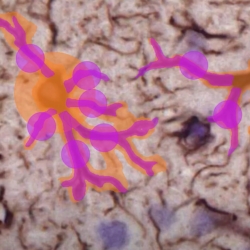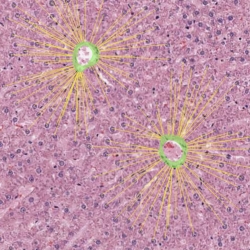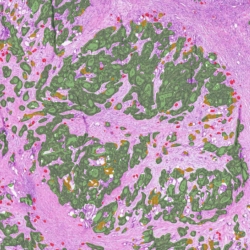Aiforia® Create is the most versatile tool for developing, customizing, and validating deep learning AI models for histological features and patterns in image analysis. Its cloud-based, collaborative working environment allows multiple users to work together in real-time, anywhere in the world. Praised for its intuitive user interface, it allows users a fast start, even without any prior AI experience. Visual data enriched with numerical verification and validation metrics enable effortless performance evaluation of AI models, ensuring top quality. Thousands of AI models have been developed with Aiforia® Create for research and clinical use cases; applications ranging from cancer research to neuroscience and even outside the medical field. Explore interesting use cases and more below. For any questions, please contact us at https://www.aiforia.com/contact-us



